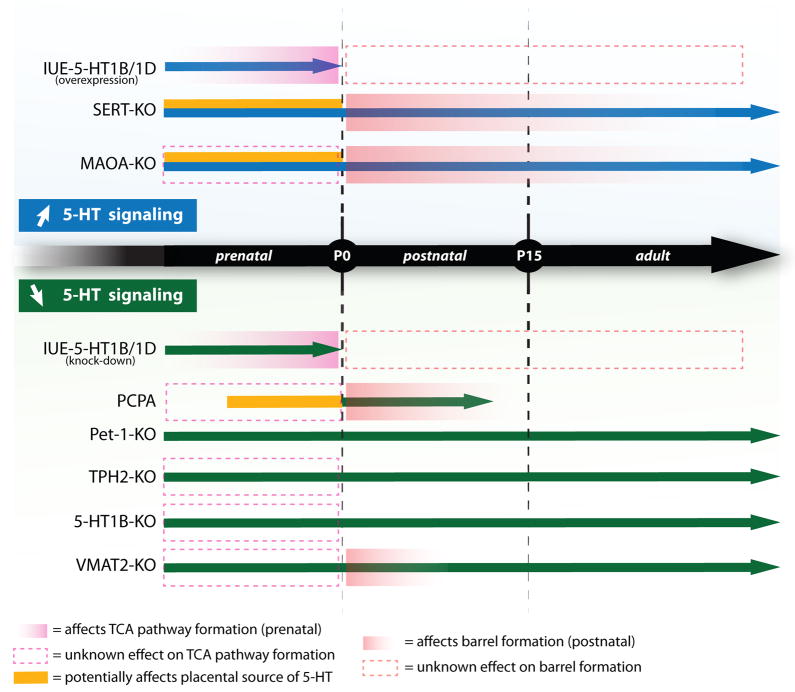Figure 2.
Timeline of the genetic and pharmacological alterations of 5-HT signaling and their effects on thalamocortical axons (TCA) pathway and cortical barrel field (BF) formation. Manipulations leading to increased 5-HT signaling during development are illustrated in the top panel. Overexpression of 5-HT1B/1D receptors (IUE: in utero electroporation) alters TCA pathway prenatally; the effect on postnatal BF formation is unknown (dotted box). In the SERT-KO and MAOA-KO mice, extracellular brain 5-HT concentration is increased and BF formation is altered postnatally. The blue arrows represent the duration of the effect on 5-HT signaling. The bottom panel illustrates manipulations leading to a decrease of 5-HT signaling prenatally (IUE) and/or pre- and postnatally (knockout mice and p-chlorophenylalanine (PCPA) treatment). Knocking down 5-HT1B/1D receptors expression by in utero electroporation alters TCA pathway prenatally, with unknown effect on postnatal BF formation. In most of the genetic mouse models, prenatal effects on TCA pathway formation were not analyzed in detail. The potential prenatal effects on the placental source of 5-HT, inferred from the targeted genes being expressed in the placenta, are indicated (yellow line).

